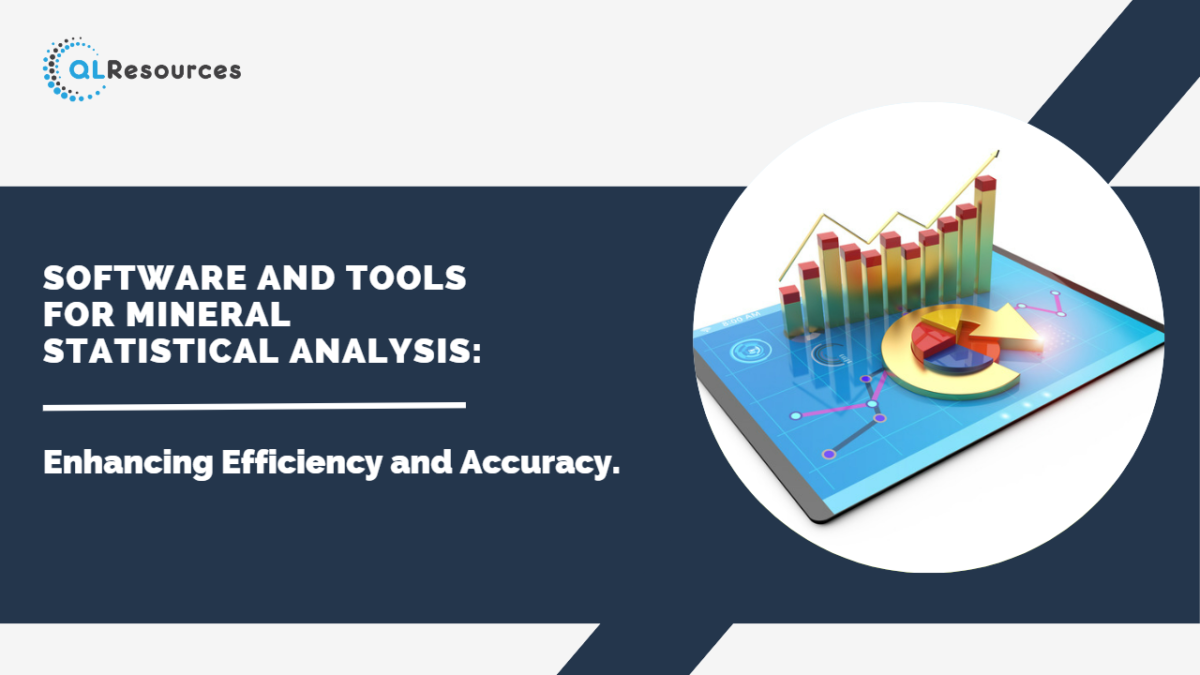In mineral analysis, statistical analysis plays a crucial role in extracting meaningful insights and making informed decisions. The use of specialised software and tools can significantly enhance the efficiency and accuracy of statistical analysis in the mineral industry. In this blog post, we will explore the benefits of using software and tools for mineral statistical analysis, highlighting their ability to streamline data processing, conduct complex analyses, visualise results, and improve overall decision-making in the field of mineral exploration and production.
1. Data Management and Processing: Specialised software and tools provide robust data management capabilities, allowing mineral industry professionals to efficiently organise and process large volumes of data. These tools enable the import, cleaning, and transformation of data into suitable formats for statistical analysis. They often include features such as data validation, outlier detection, and data imputation techniques, ensuring the integrity and quality of the data used in statistical analysis.
2. Advanced Statistical Analysis: Software and tools designed for mineral statistical analysis offer a wide range of advanced statistical techniques tailored to the specific needs of the industry. They provide capabilities for descriptive statistics, hypothesis testing, regression analysis, spatial analysis, geostatistics, and multivariate analysis. These tools empower researchers and analysts to uncover patterns, correlations, and trends within mineral datasets, leading to a deeper understanding of the data and more accurate interpretations.
3. Visualisation and Reporting: Effective communication of statistical findings is essential in the mineral industry. Software and tools offer powerful visualisation capabilities, allowing analysts to create insightful charts, graphs, maps, and interactive dashboards to present statistical results in a visually appealing and easily understandable manner. Visualisations help stakeholders grasp complex information, identify patterns, and make data-driven decisions. Additionally, these tools facilitate the generation of comprehensive reports and summaries, providing a clear and concise overview of statistical analyses for stakeholders and decision-makers.
4. Efficiency and Automation: Mineral statistical analysis software and tools streamline and automate repetitive tasks, saving time and improving productivity. They often include features such as batch processing, scripting, and template-based workflows, enabling analysts to automate data analysis processes and generate consistent results efficiently. By reducing manual efforts and automating routine tasks, these tools allow analysts to focus on interpreting results, identifying insights, and making informed decisions based on statistical findings.
5. Integration with Other Software: Many mineral statistical analysis tools are designed to seamlessly integrate with other software commonly used in the industry, such as geospatial software, mining software, and database management systems. This integration facilitates data exchange and interoperability, enabling analysts to combine and analyse data from multiple sources effectively. Integrating statistical analysis tools with existing software ecosystems enhances efficiency, promotes data consistency, and enables cross-functional collaboration within mineral exploration and production workflows.
6. Decision Support and Risk Analysis: Software and tools for mineral statistical analysis provide decision support capabilities, allowing users to perform risk analyses, scenario modeling, and sensitivity analyses. By incorporating statistical models and simulations, these tools assist in evaluating the uncertainty associated with mineral exploration and production decisions. They enable analysts to quantify risks, assess potential outcomes, and optimise resource allocation strategies based on statistical insights, enhancing the overall decision-making process.
Conclusion: Software and tools for mineral statistical analysis offer a wide range of benefits, including efficient data management, advanced statistical analysis techniques, visualisation capabilities, automation, integration with other software, and decision support functionalities. By leveraging these tools, professionals in the mineral industry can enhance the efficiency and accuracy of their statistical analyses, leading to improved decision-making, optimised resource allocation, and ultimately, better outcomes in mineral exploration and production processes. Embracing specialised software and tools empowers the industry to unlock valuable insights from data and maximise the potential of statistical analysis in the pursuit of sustainable and efficient mineral operations.
Join our community and never miss an update! Subscribe to our newsletter and blog to stay up-to-date on the latest trends, tips, and insights in your area of interest. Don’t miss out on exclusive content and promotions. Sign up now and be a part of our growing community!
